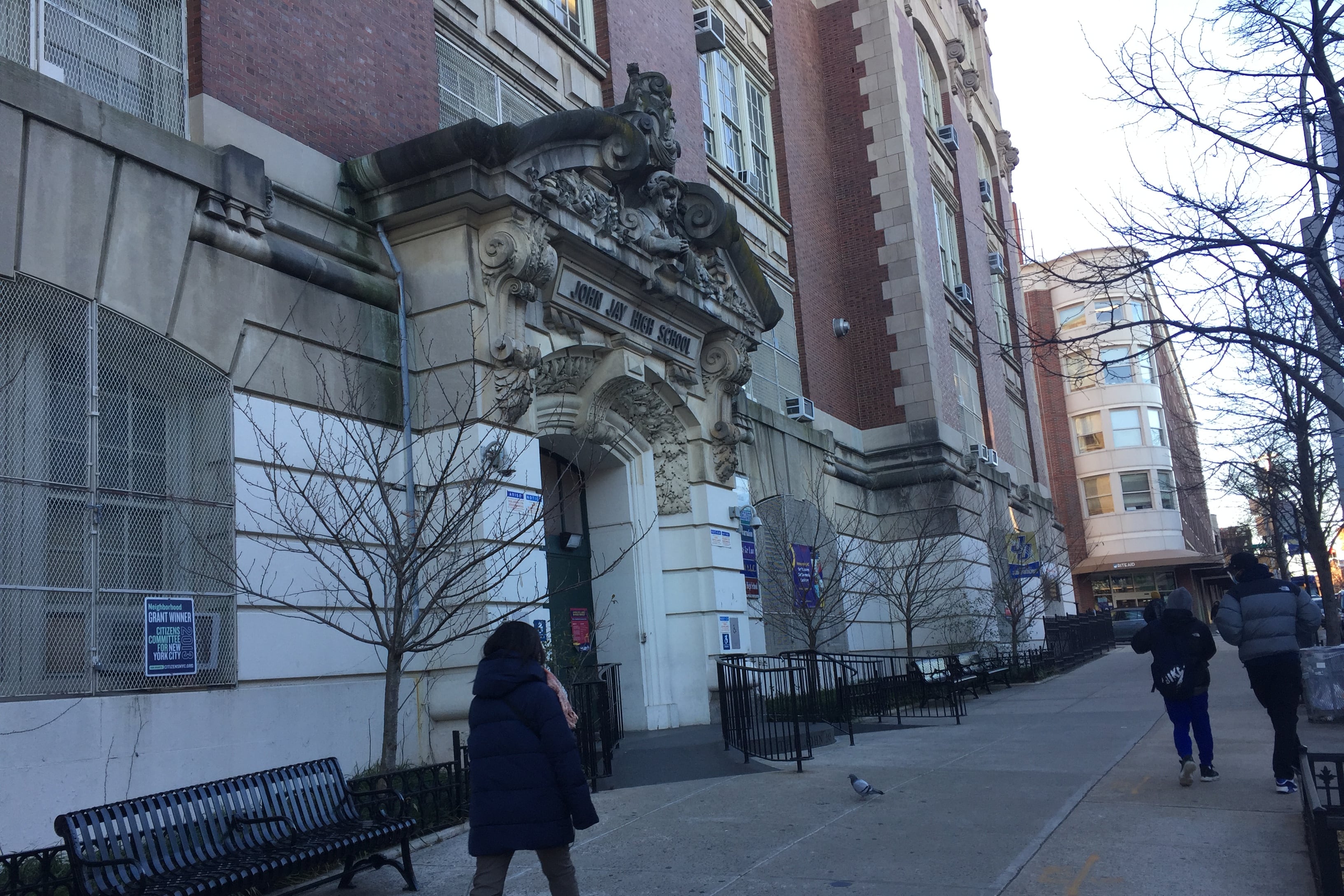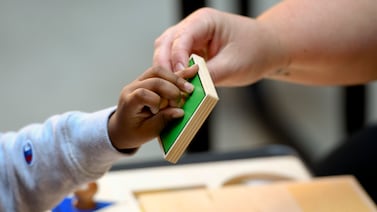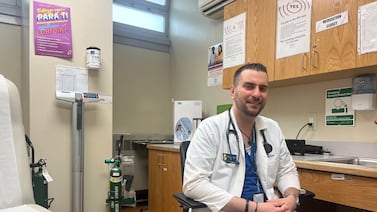Noor Muhsin, a senior at one of Brooklyn’s most selective public high schools, noticed that this year’s freshman class looked different than hers — and it filled the Millennium Brooklyn student with pride.
After admissions rules were loosened during the pandemic, many schools like hers saw a jump in the number of Black and Latino students admitted. At Millennium Brooklyn, the difference was significant: 43% of students admitted last year were Black and Latino, compared to just 20% the year before.
In New York City, where public schools are among the most segregated by race and class in the country, the pandemic upended school admissions: selective schools couldn’t rely as heavily on grades, test scores, and attendance records to screen students. The result at many of the city’s most competitive schools was a freshman class that looked more like the city as a whole.
But recently announced changes to high school admissions for next year could slow that progress, city education department projections show.
“I’m really concerned it’s just going to kind of go back to its old ways of being a mostly wealthy, mostly white school,” said Muhsin.
Millennium Brooklyn wasn’t alone in seeing a more diverse freshman class because of pandemic enrollment reforms. At the city’s 27 highest-performing screened schools, 40% of students accepted last year were Black and Latino, up from 28% in 2020.
“I would consider these pretty substantial changes,” said Sean Corcoran, a professor of education and public policy at Vanderbilt University. Under last year’s rules, roughly 60% of all of the city’s eighth graders qualified for priority access to screened schools – a historically large swath of kids.
But that access is being tightened again under new rules announced last month by schools Chancellor David Banks. The new system prioritizes students who score in the top 15% of their school or citywide by grades, and average at least a 90% — earning them a “tier one” designation. Roughly 20% of this year’s eighth graders will end up in tier one for screened high schools this year, education department officials say.
Just 10% of students projected to fall in tier one are Black, even though Black students make up 26% of all eighth graders, according to education department projections. Latino students will make up a projected 23% of tier one, despite comprising 42% of all eighth graders.
The projections don’t give a perfect picture of who will end up in screened schools — that partly depends on who ultimately decides to apply, and who ends up at specialized high schools like Stuyvesant and Brooklyn Tech, which use a completely separate admissions system. But they do give a sense of how the process could play out, experts say.
Doubling down on academic screens
Last year’s rules drew sharp criticism from many parents, who argued they unfairly disadvantaged the very top academic performers by failing to give them a leg up over lower-performing kids.
Banks heeded those criticisms, saying as part of his admissions announcement this year that “if a young person is working their tail off every single day and they get a 99% average … that should be honored … you should not be thrown in a lottery with just everybody.”
The schools chief offered an even blunter defense of the new admissions rules Thursday when he said students who work “really hard” should have priority access compared with “the child you have to throw water on their face to get them to go to school every day.”
Middle schools, which paused screens altogether during the pandemic, are also now allowed to restore competitive admissions standards at the discretion of district superintendents.
Parents of high schoolers will be able to see their child’s tier number in the application portal, which opened Wednesday. Education department officials didn’t immediately say what scores would land a student in the top 15% of grades citywide.
Overall, there are roughly 18,000 seats in the city’s 120 screened high school programs, and about 13,000 students will land in tier one, according to the education department. Competition is often fiercest at a small subset of screened programs, which receive far more applications than they have seats.
Emily Yolkut, whose eighth grade daughter is currently applying to high school, said looking at the statistics on applicants per seat is disheartening. “Every page you click on is more disappointing than the next,” she said.
And for kids whose grades might not land them in the top tier, but who are still interested in attending screened schools, the process can feel even more daunting.
Cynthia Arbulu-Vacca has an eighth grade son who’s interested in attending a specialized or screened high school, but has at times struggled to perform up to his academic potential, in part because of his learning disabilities, Arbulu-Vacca said. She worries that might restrict his options when it comes to high school.
“Screened environments … they want a particular type of kid who can just breeze through assignments,” she said. “All kids can’t do that.”
A move toward transparency
There are some changes that advocates and experts say could make the notoriously complex high school admissions process more equitable than it was before the pandemic.
For many years, the city’s roughly 120 screened programs had wide discretion to choose their own specific admissions criteria — using a mix of test scores, grades, attendance records, and other factors.
This year, nearly all screened schools will operate under the same set of rules, making it easier for parents to gauge their kids’ chances. Information on open houses will also be listed centrally.
Twenty-one schools including Beacon High School and the Bard Early Colleges with their own application processes, including essays and interviews, will still be allowed to operate outside the top 15% plan.
“A system like this is a little more transparent … it’s pretty clear how you qualify,” said Corcoran. “I like that aspect of it.”
Eliminating the use of state test scores could also have an impact on who qualifies for screened programs, Corcoran said, especially in terms of the gender balance.
“Grades especially advantage girls — you may see a big shift there,” Corcoran said. The DOE didn’t provide a projected gender breakdown of tier one.
Some screened schools already skew female: 61% of Millennium Brooklyn students are girls, according to the most recent education department data.
Banks, a frequent critic of testing, has argued that grades are a better indicator of a student’s academic level than test scores.
Admissions systems that draw top performers from each school also have the potential to broaden access — especially in systems like New York City, where middle schools are largely segregated by race and class.
But there are several provisions in the city’s new high school admissions rules that could dilute the “top 15%” plan’s potential to boost the number of underrepresented students.
For one, students must also score a minimum of 90% in addition to scoring in the top 15 %. And at schools with high numbers of high-scoring students, more than 15% of students can land in the tier one as long as they score in the top 15% of grades citywide.
Banks has stressed that the city is full of great, unscreened high schools that accept a wider range of students.
But some educators involved with unscreened schools say the very existence of screened programs can make their jobs more difficult by skimming off the highest-performing and least needy kids, while concentrating the kids with the biggest challenges in other schools.
David Adams, the CEO of Urban Assembly, a nonprofit that helps operate two dozen unscreened public high schools in New York City pointed out that when “when we use these [screens], what happens is certain schools have to take on an additional responsibility to solve for a higher-needs population and certain schools do not.”
“We’re proud of the work we do to serve every student who walks through our doors,” he said. “I would like that responsibility to be shared across all schools at the DOE.”
Michael Elsen-Rooney is a reporter for Chalkbeat New York, covering NYC public schools. Contact Michael at melsen-rooney@chalkbeat.org.






